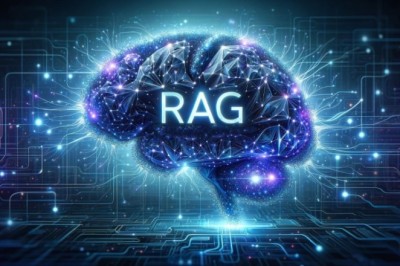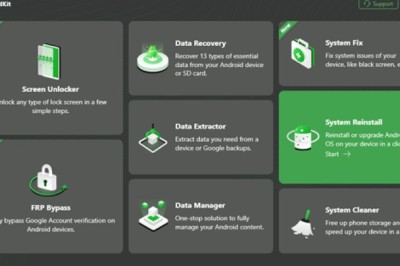views
Alcohol use disorder (AUD) is a serious issue in its own right, but the dangers of using alcohol can even apply to drinking responsibly and in moderation, especially when prescription medications are involved. Here’s what you need to know about mixing alcohol with prescription medications.
Is Alcohol a Drug, Too?
It’s easy to treat alcohol and prescription drugs in two different classes. After all, while both are legal substances, one requires a medical doctor’s approval, while the other is served in restaurants, bars, grocery stores, and even gas stations with the simple requirements of being at least 21 years old with a valid photo ID. While these social differences are true when comparing alcohol and prescription medications, they quickly become much closer by comparison when evaluating their effects on the human brain.
Alcohol affects the brain by suppressing the central nervous system. This means the substance falls into the central nervous system (CNS) depressants category. This puts alcohol, chemically speaking, in the same category as prescription medications like Xanax, amobarbital, and Ambien. Together, these three medications are among the sedative drugs on the market, including benzodiazepines, barbiturates, and Z-drugs. Like these drugs, alcohol slows the communication between the brain and the body, which can have a pain-relieving effect, euphoria, relaxation, and other typical side effects of these medications. This is why these medications treat insomnia, anxiety, and other related disorders.
Mixing Different Examples of the Same Thing
However, alcohol commonly shares many of the same overdose symptoms that sedative drug users experience. When too much alcohol is in the body, this suppressing effect on the brain can result in dangerous miscommunications with the body’s vital organs. Some overdose symptoms related to alcohol and other CNS depressants include confusion, seizures, hypothermia, vomiting, coma, and highly dangerous changes in breathing and heart rate. What makes this connection so important is the combined use of alcohol along with other CNS depressant drugs.
For example, someone may not use alcohol to the point of overdose, but they also may not think about the combined effects of drinking one or two alcoholic beverages along with the use of a drug like Ambien or Xanax. However, when these drugs are mixed, the result is as if we have consumed even more alcohol or even more of a particular prescription drug. Despite the substances themselves being different in name or form, they are still CNS depressants with the same combined effect on the brain and body, meaning we can experience the same kind of overdose dangers that would normally be experienced by someone who drinks too many alcoholic beverages or takes too many prescription pills at one time.
Being Responsible for Ourselves and Others
It is worth mentioning that while alcohol labels generally warn users to avoid operating machinery or using certain medications, CNS depressants like Xanax or Ambien have strong warnings regarding alcohol use while on those medications. Not only do these labels generally recommend avoiding the mixture of alcohol altogether, but they also warn of the increased risk of dependency for those who have a history of alcohol or other drug abuse. That is why we need to be careful even with less strong pain reliever drugs , because paracetamol and alcohol can also cause addiction. In addition to the increased risk of overdose when using multiple CNS depressants at once, there is also an increased risk of developing an addiction to one or even both substances.
If you or someone you know is addicted to alcohol or another CNS depressant, it’s important to reach out to medical professionals dedicated to helping people who have a substance use disorder (SUD). Even if you don’t have an SUD, it’s important to know of these overdose and dependence risks when combining different CNS depressants. It’s an increased danger that many people don’t realize until it's too late.
Sources
Psychology Today. (2016, January 5). Which Is More Dangerous: Alcohol or Drugs? Retrieved https://www.psychologytoday.com/us/blog/all-about-addiction/201601/which-is-more-dangerous-alcohol-or-drugs
National Institute of Health: National Cancer Institute. (n.d.). CNS Depressant. Retrieved https://www.cancer.gov/publications/dictionaries/cancer-terms/def/cns-depressant
Delphi Health Group. (n.d.) Alcohol Overdose: Symptoms, Effects on the Body, and Risk of Death. Retrieved https://delphihealthgroup.com/alcohol/overdose/
NIH (2021, June). Alcohol Facts and Statistics. Retrieved https://www.niaaa.nih.gov/publications/brochures-and-fact-sheets/alcohol-facts-and-statistics
CDC. (n.d.) Alcohol Faqs. Retrieved from https://www.cdc.gov/alcohol/faqs.htm
United States Food and Drug Administration (2016 September). Xanas: Alprazolam tablets, USP. Warning and Description. Retrieved https://www.accessdata.fda.gov/drugsatfda_docs/label/2016/018276s052lbl.pdf
Delphi Health Group. (n.d.). Guide to Drug Addiction: Symptoms, Signs, and Treatment. Retrieved https://delphihealthgroup.com/addiction/
NIH. (2007, June 28). Researchers Identify Alcoholism Subtypes. Retrieved https://www.nih.gov/news-events/news-releases/researchers-identify-alcoholism-subtypes
Harvard School of Public Health. (n.d.). Drug Overdose Deaths Hit Record High. Retrieved https://www.hsph.harvard.edu/news/hsph-in-the-news/drug-overdose-deaths-hit-record-high/






















Comments
0 comment